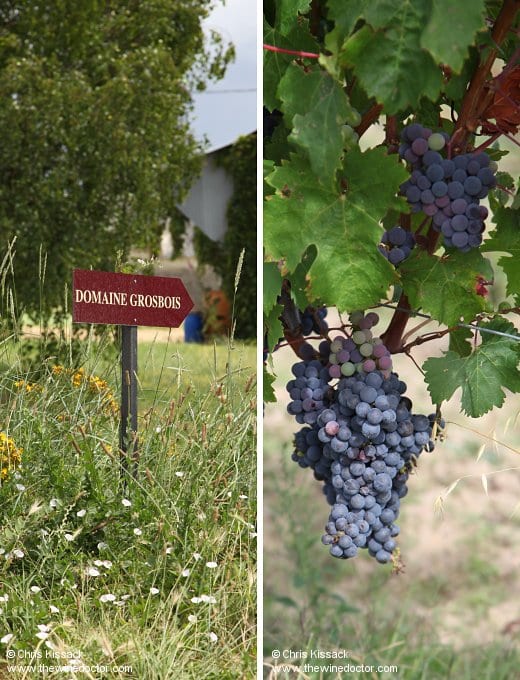Domaine Grosbois
Many wine lovers enjoy the drive along the D2 in Bordeaux, past many of the grandest châteaux of St Estèphe, Pauillac, St Julien and Margaux. For those who have gravitated to Burgundy instead, the RN74, which runs parallel to the greatest vineyards of the Côte d’Or provides similar delight, the east-facing slopes bearing some of the greatest vineyards in wine, from Chambertin down to Montrachet. It should come as no surprise to learn that there are similar sightseeing hotspots of interest to the wine-minded visitor along the length and breadth of the Loire Valley. One of my favourites is undoubtedly the D21 which runs along the foot of the limestone slope from Chinon through Cravant-les-Coteaux to Panzoult, roughly parallel to the course of the Vienne. The road passes a number of famed domaines and equally famous vineyards, and fans of the small screen might also spot some of the filming locations for the Netflix hit Emily in Paris, as the scenes in ‘Champagne’ were actually filmed at two domaines overlooking this road.
And why not? This beautiful parade of vineyards is the Loire Valley’s version of the Côte d’Or. Indeed, I recall walking down the slope of La Croix Boisée with Matthieu Baudry more than a few years ago, and he likened the manner in which the soils change as we moved through the vineyard, from sandy clay at the foot of the vineyard, to clay and limestone and then to pure limestone near the summit, to the slopes above Nuits-Saint-Georges and Beaune. It is because of this very beneficial terroir, the upper sections being ideal for both Cabernet Franc and Chenin Blanc (so are the lower sections in truth, but in general the higher up you go the more interesting the wine), that any domaine or indeed any vineyard located along this slope, looking down onto the mildly meandering route of the D21, is worthy of investigation.

Remarkably, some of these domaines remain relatively under the radar. One of their number is Domaine Grosbois, located at Le Pressoir, a grand maison dating to the 15th century (and today classified as a monument historique) which is located on these slopes. Here Nicolas Grosbois holds the reins, ever since taking over from his parents in 2006.
Please log in to continue reading: